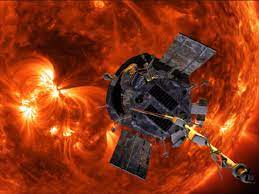Bengaluru, Dec 2 : India’s Aditya-L1 satellite has successfully initiated operations of the Aditya Solar Wind Particle Experiment (ASPEX) payload, according to a statement from ISRO on Saturday.
Launched aboard ISRO’s Polar Satellite Launch Vehicle (PSLV-C57) on September 2, the Aditya-L1 spacecraft is positioned as the first Indian space-based observatory to study the Sun. It orbits around the Sun-Earth Lagrangian point L1, approximately 1.5 million km from Earth.
The ASPEX payload comprises two state-of-the-art instruments, namely the Solar Wind Ion Spectrometer (SWIS) and the SupraThermal and Energetic Particle Spectrometer (STEPS). The STEPS instrument began its operations on September 10, 2023, and the SWIS instrument was activated on November 2, 2023, demonstrating optimal performance.
ISRO highlighted that the SWIS instrument, equipped with two sensor units boasting a remarkable 360° field of view each, operates in perpendicular planes. It successfully measured solar wind ions, primarily protons and alpha particles. The agency shared a sample energy histogram obtained from one of the sensors in November 2023, illustrating variations in proton and alpha particle counts.
The directional capabilities of SWIS enable precise measurements of solar wind protons and alphas, contributing significantly to unraveling longstanding questions about solar wind properties, underlying processes, and their impact on Earth, explained ISRO. Additionally, changes in the proton and alpha particle number ratio, observed by SWIS, have the potential to offer indirect information about the arrival of Coronal Mass Ejections (CMEs) at the Sun-Earth Lagrange Point L1.
The enhanced alpha-to-proton ratio is often considered a sensitive marker of the passage of interplanetary coronal mass ejections (ICMEs) at the Lagrange Point L1, making it crucial for space weather studies, ISRO emphasized.
This successful commencement of operations marks a significant milestone in India’s space exploration endeavors, as Aditya-L1 continues to contribute valuable data for solar research and deepening our understanding of space weather phenomena.

